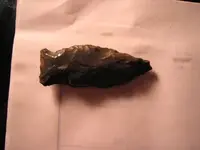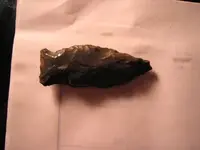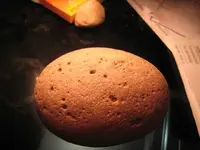Archaeologists have divided the human presence in NA into different categories and sub categories starting with Paleo-indian 14,000-9000 BP Archaic, early, middle, late 9000-3000 BP. Woodland 3000-1300 BP, Missippian 1300-400 BP. They have also named the stone projectile points found in those time periods, points that have a certain, shape or chipping are usually named for the area they were first found or an archaeologist\collector who first noticed and cataloged them. So by comparing the shape, chipping and location where found it is possible to put a found point into a category which fits into one of the above phases and determine what people made it and when they lived. Points are like time capsules that tell us when they lived and possibly what animals they hunted. There is much more to this and one can get into it on any level. There are many good books on projectile point identification and that would be a good start. There are some really knowledgeable people lurking on this forum and their posts are worth reading. The only way to learn is to ask and usually someone will answer your questions. Thats what I do.








